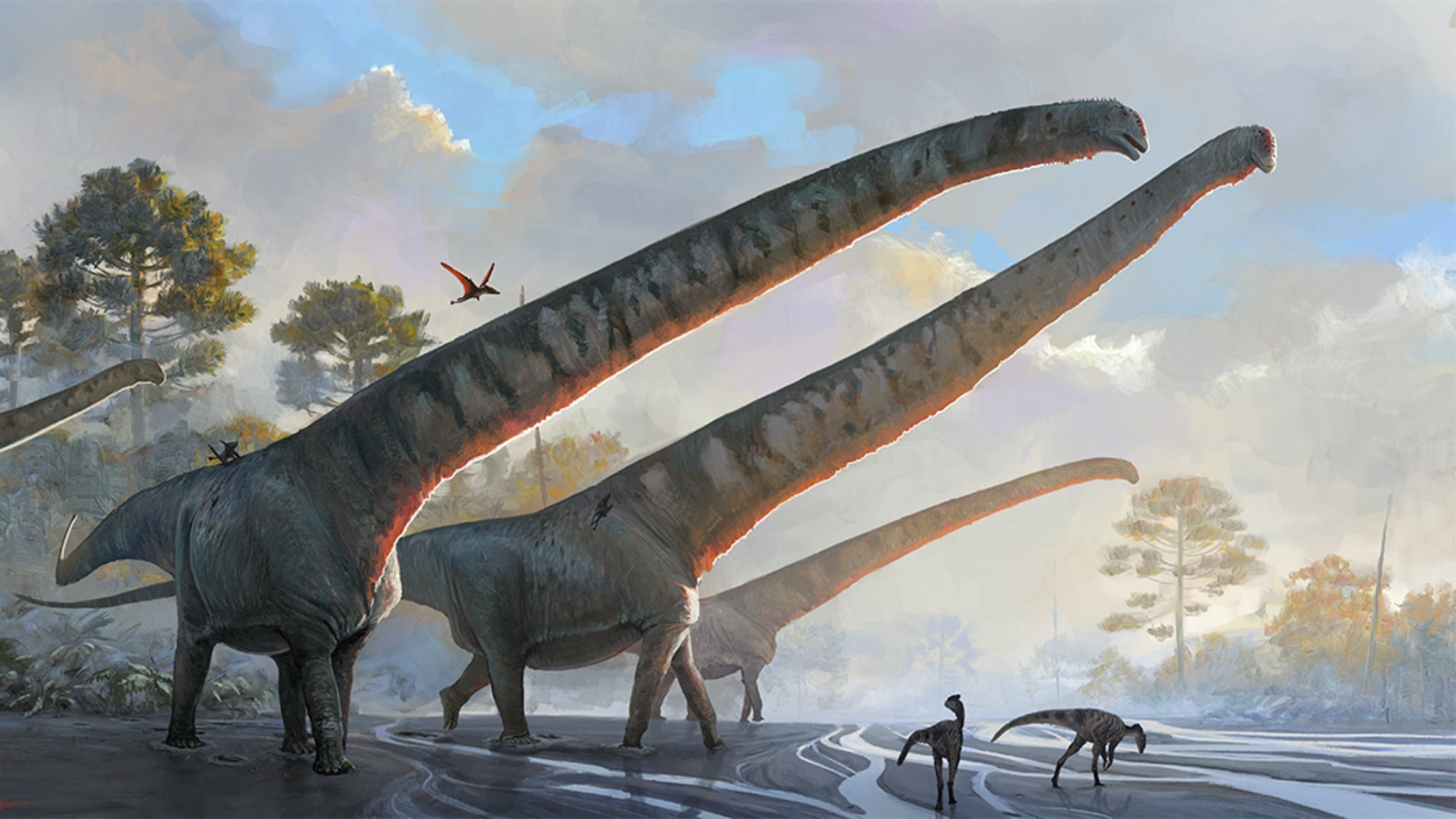

Dinosaurs came in all shapes and sizes, but we know they could get pretty darn big. For sauropods, a clade of dinos that roamed the planet from the Early Jurassic all the way to the Cretaceous–Paleogene extinction event, their size was largely reflected in their long necks. But according to new findings, the Mamenchisaurus sinocanadorum uncovered in modern-day China may have been the longest-necked of them all.
In a study published today in The Journal of Systematic Paleontology, an international team of scientists determined that this particular specimen of sauropod had a 49-foot-long neck—that’s six times as long as a giraffe neck.
“It would require a lot of muscles to hold up a neck that size, and then there’s the question of how it gets air down to the lungs and back up again,” Paul Barrett, a professor at the Natural History Museum in London, said in a press release. “This could support the theory that these necks were a sexually selected feature where only the strongest and fittest dinosaurs that were able to hold up these giant necks in impressive displays were able to mate.”
[Related: Feisty ankylosaurs clubbed each other with their tails.]
This took paleontologists quite a bit of puzzling—there’s only one Mamenchisaurus sinocanadorum specimen to analyze, discovered in 1987 at a site in the Shishugou Formation in northwestern China. The skeleton only includes the front end of the neck, a rib, some skull bones, and a lower jaw.
So, how do you measure the entire length of a neck from just a few bones? Well, you have to find a similar species to compare it to. In 2012, the giant sauropod Xinjiangtitan was uncovered in China with an intact 43-foot-long neck. Using an “elementary bit of maths,” Barrett explained, the team was able to look at proportions of the relative’s vertebrae and scale up the incomplete skeleton. What they found was a specimen that could very well be a record-breaker.
But the team didn’t just figure out how long the dinosaur’s neck was—they prodded at the biomechanics of how such a body part could even exist. Using computer-tomography scanning, the authors found that the hollow vertebrae of the massive sauropod was around 69- to 77-percent air, which is similar to modern-day storks. The authors determined that to protect such a lightweight neck from getting hurt, the dinosaur had 13-foot-long rod-like cervical ribs on either side for stability.
“Biomechanical studies of the [Mamenchisaurus] neck suggest that it was elevated at only a relatively shallow angle above the horizontal (20 to 30°). However, even at this relatively shallow angle, the extreme length of the neck would still mean that the animal’s head could reach heights of around [25 to 33 feet] above ground level,” co-author Paul Upchurch, a professor of palaeobiology from the University College London, said in a press release.
[Related: Move over, Stegosaurus, there’s a new armored dino in town.]
The reasons for the long neck—and exact mechanics of how it worked—are still a mystery, but some paleontologists believe they could have evolved so the giant creatures could sit still in one spot and still have access to lots of leafy trees to eat. They could have also allowed the sauropod to shed extra heat by increasing their surface area.
“It could have also been to do with sexual display or used for neck-butting contests between males fighting over mates and territory, similar to how giraffes behave today,” Barett said. “But we can’t say for sure. At this point, it’s pure speculation as to why they evolved necks of this length.”
